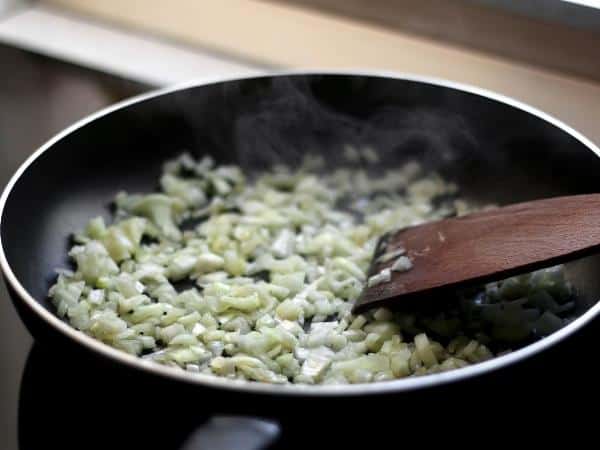A Sous Chef’s Guide to Sautéing: 5 Steps for Success
This is a collaborative post.
Are you looking to add vibrant colour and flavour to your go-to dishes? If so, take a step in the sauteing direction. For those beginner chefs still finding their footing in a kitchen, sauteing is a quick frying technique, made complete with a healthy dose of fat and a sturdy hand. Sounds simple, right?
While sauteing is a popular step in your everyday cookbook, turning your sauteed masterpiece into a sauteed disaster is easy. Too much heat and not enough fat is the recipe for a burned dish, while low heat and extra oil can make your meal soggy and under seasoned. Having the right equipment, technique, and a step-by-step guide in hand is key. These top restaurant chef tips should help.

Ready to fry up some flavour? Here are five steps to make your sauté a success.
Stock up on the right equipment
The proper equipment is crucial for success in the kitchen, especially when it comes to fussy techniques like sautéing. A trusty sauté pan with a large surface area and straight sides is ideal. A skillet is another must-have when it comes to sautéing. The skillet’s curved edges allow you to flip food without a spatula, as long as you have the proper wrist technique.
Lastly, a staple in any quality home chef’s kitchen is a dual fuel range. This multitasking appliance gives you the freedom to use an electric oven to keep baking temperatures precise while having a gas cooktop to hone heat to your liking. Remember, controlling the flame under your sauté pan is essential to perfecting the sauté technique.
Choose the right fat
Sauteing is frying in just the right amount of fat to brown your food without making it soggy. Therefore, choosing the right fat is essential to the outcome of your sauté. Try using neutral vegetable oils, such as olive oil, canola oil, peanut oil, or grapeseed oil. Butter also does the trick. Whatever your oil of choice, only add enough fat to coat the bottom of the pan. The idea is to slide your food quickly through the pan, not fry it in a shallow pool of oil.
Carefully monitor the heat
Monitoring the flame under your pan helps you regulate the amount of heat touching your food, and using the right equipment controls the disbursement of temperature. With temperature distribution playing a critical role in the success of a stir fry, a dual fuel range is nothing short of a kitchen essential, as you can use the gas cooktop to play with the flame level until your food reaches that perfect golden brown.
For ultimate frying success, make sure the oil in your pan is hot before adding in the food. This sauteing strategy will ensure that your food begins to cook right away rather than absorb excess oils.
To test the temperature of your pan, try sprinkling in a few drops of water. If the water quickly boils and evaporates, your pan is ready for sauteing. However, if you notice smoke wafting from the edges of your pan, this means your fat is burning. If burning is the case, cool your pan, use fresh fat, and try again.
Create a uniform mix
If you are cooking different ingredients in one saute, try cutting them up into uniform sizes. Keeping the ingredients the same size ensures that heat is being distributed evenly among each bite.
When sauteing, be sure to consider the denseness of the foods as well. Carrots are denser than zucchini, so if you want them to cook evenly, cut the carrots smaller than the zucchini. Butternut squash cooks slower than mushrooms, so consider adding the mushrooms after the squash has achieved optimal tenderness.
Master the deglaze
The deglaze is the piece de resistance to the sauteing method of cooking. While you saute, your pan will develop caramelized bits of food that stick to the bottom of the pan. These small brown bits are packed with flavour and are not to be abandoned in the pan or discarded post-preparation.
To ensure your stir fry packs a punch, utilize these brown bits to your advantage. After you remove the food, pour some stock, wine, or even juice into the hot pan and let the caramelised bits float to the top. Incorporating these cooked down and impeccably seasoned bits into an added liquid creates a gravy or sauce to either pour over your sauteed entree or add a side dish to tie the whole meal together.
Final thoughts
Sauteing is an often-used technique in home cooking, but it is more complicated and requires more attention than you might think. You need the right equipment like a proper saute-friendly pan and a cooktop flame you can control. Also, consider the fats you will use and make sure you have your food well prepped and cut into even pieces.
Keep an eye on that flame and finish it off with a deglaze, and you’ve got yourself a well-sauteed meal.
Other articles you may find helpful
If you like cooking tips and especially equipment tips then these are some of my articles I think you should check out
Oven temperature conversion charts and cups to ml and grams conversions